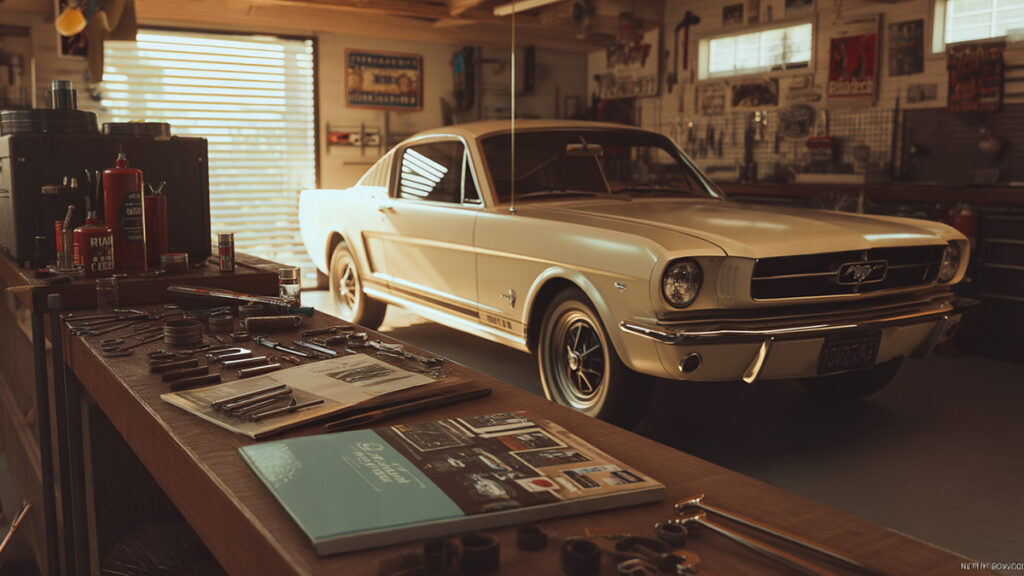Restoring a classic car is a rewarding experience. Whether you’re aiming to show your car at a car show or just enjoy driving it, knowing how to handle DIY restoration work is crucial. In this guide, let’s break down some auto body repair key tips for maintaining your vintage vehicle.
Classic Car Body Repair
One of the most important parts of classic car restorations is classic car body repair. Over time, body panels can suffer from rust, dents, or other damage. For classic car rust repair, you’ll need to remove the rust, apply primer, and repaint using original paint. If your classic car bumper repair is needed, patching it with epoxy filler and sanding it smooth can restore its appearance.
Another key area is classic car paint repair. Apply a fresh paint job using high-quality paint to make sure the car looks as good as new. Restoring classic cars often involves rust damage, so make sure to treat rust early to avoid costly repairs down the road.
Classic Car Engine Repair
One of the most complex parts of restoration is classic car engine repair. Regularly check for leaks or worn-out parts, and replace them as needed. If your classic car radiator repair is necessary, flushing the radiator will keep your engine running cool. Overheating can lead to major problems, so staying on top of engine maintenance is key.
If you experience issues with shifting gears, classic car transmission repair might be needed. Some of these repairs can be done at home, but for complex issues, consider consulting classic car repair services.
Classic Car Electrical Repair
Electrical systems can be tricky for older car owners. For classic car electrical repair, check for issues like faulty wiring or switches. If your classic car horn repair is needed, inspect the electrical system and replace the horn or connections.
Similarly, classic car air conditioning repair can help maintain comfort during summer months. Replace the compressor or check for leaks in the system to keep things running smoothly.
For classic car gauge repair, recalibrating or replacing old dials will restore functionality. Classic cars often have unique or hard-to-replace parts, so attention to detail when repairing your car’s electrical system can save a lot of future headaches.
Classic Car Interior and Dash Repair
Classic car interior repair is another essential area of restoration. Over time, upholstery can become worn, and dashboards can crack. Classic car dash repair, or dashboard repair, is an excellent way to bring back the vehicle’s original look. For small cracks, a vinyl repair kit can help maintain the look of your dashboard.
For those dealing with timeworn clocks, classic car clock repair may be necessary. Replacing the clock mechanism with a working version will restore the car’s original aesthetic.
Classic Car Glass Repair
Classic car glass repair is essential for maintaining the vehicle’s safety and visual appeal. Cracked windshields or side windows are common issues. Classic car auto glass repair can be done by replacing the damaged glass with an exact match to your car’s original. Be sure to find a reputable company that specializes in classic car glass repair.
Frame and Bumper Repairs
For more severe damage, classic car frame repair may be necessary. Frame issues, such as rust or bending, can compromise the safety and structure of your vehicle. Frame repairs require expertise and often involve welding. If you’re dealing with classic car collision repair or classic car accident repair, be sure to assess the damage thoroughly and consider professional help if needed.
If you have a damaged bumper, classic car bumper repair might be an easy fix with the right tools and materials. If the bumper has deep dents or cracks, you may need classic car dent repair services.
Restoring Your Classic Car’s Original Features
Restoring classic cars isn’t just about fixing problems; it’s about making sure they remain as close to their original design as possible. For those working on restoring a classic car, maintaining original paint and parts is key. Ensure you’re using high-quality materials to retain the car’s authenticity, avoiding wear and tear.
If you’re thinking of upgrading your car’s features, make sure you consult with experts to find the right parts for classic cars that match the era of the vehicle you’re working on.
Conclusion
Whether you’re fixing rust, repairing a bumper, or restoring an interior, the classic car repair and restoration process requires patience and the right knowledge. From classic car engine repair to classic car frame repair, understanding the intricacies of vintage vehicles will allow you to properly restore and maintain your car. With attention to detail, you can ensure your classic car is repaired and restored to its former glory. Visit our website and contact us today to find your next car and start your auto restoration journey.
